
Why is it important to “Know your nerve cells”? Because if your nerves become damaged, as is easily the case if your vitamin B12 levels are low, your nerves can cause a lot of pain.
Understanding Your Nerves
You have a central nervous system composed of your brain and the nerve tissue in your spinal column. Your central nervous system controls most functions in your body, so obviously it’s vitally important.
You also have a peripheral nervous system, that is, all the other nerves. Clearly that’s an extensive system, so it’s not surprising that all the nerves comprising it are not the same. Rather, there are two main types: sensory nerves originating in your skin, joints, muscles, bones or even internal organs, and the other type: motor nerves.
Your sensory/peripheral nervous system is half of your neuromuscular system. That’s because many sensory nerves work in tandem with muscles. Isn’t it amazing, really, that you can analyze your environment through your senses, then modify your environment through actions your nerves bring about in your muscles?
“Analyze” may be a misleading word since one of the most dynamic aspects of the reflex arc (peripheral nerves influencing muscles) is that in higher life forms like ourselves, the synapses, the dynamic connections, take place in the spinal cord rather than having to go all the way to the brain.
The second type of nerve composing your peripheral nervous system is motor nerves. These nerves originate in your spinal column and terminating in your muscles.
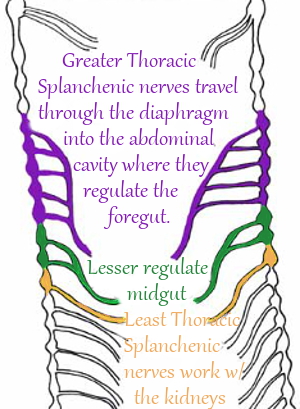
Some motor nerves are called autonomic. They are the ones you don’t consciously control. Some of these nerve fibers terminate on glands, organs or smooth muscle fibers. A good example is in your digestive system where your nerves and smooth muscles automatically move the food you eat ~ you don’t have to think about it to make it happen.
When I had tetanus, a central nervous system disease, one of the most frightening aspects was when I’d be up for three or four minutes and my whole stomach area would begin to feel as if it was turning to cement. I couldn’t shower fast enough to avoid the feeling. The tightening of muscles pulled me forward, bending me as if I had advanced osteoporosis. Sleep relaxed it, so each morning I’d feel good, until I’d been out of bed for a few minutes.
Also frightening was how tetanus affected the nerves of my thoracic diaphragm, causing not only pain but tightening so that I sounded like an ancient person with the thinnest, wispiest of voices. Tetanus ~ When Gardening Becomes Life Threatening.

The good thing about having tetanus and not enough money to get a doctor to prescribe the antibiotic to kill the clostridia bacteria, was that I used more vitamin B12 shots, since B12 is known to be good for nerves. To my surprise having a B12 shot a day completely rid me of peripheral neuropathy pain. Not overnight, of course, but within a relatively short time. Doctors had told me the pain and numbness were irreversible and permanent.
Doctors also told me too much B12 was as dangerous as too little. I had to beg for a B12 shot a month. Recently, after months of the equivalent of two B12 shots a day, in the form of lozenges, I reached the “too much” point and had painful muscle spasms. I used Cilantro capsules to trap the excess cobalt and potassium foods to reduce and eventually eliminate the spasms. That was pretty easy, much easier in fact than it had been living with the peripheral neuropathy pain for years.
I’m not saying that you shouldn’t listen to your doctor, I’m saying that everything a doctor tells you may not be absolutely accurate. So, for things like vitamins it’s good to see how things actually work for you. By that I mean keeping a Time Line, or Journal.
Let’s Look at a Nerve
To appreciate nerves/neurons, where B12 does much of its work, and to understand why potassium is super important, we need to look more closely at a nerve in its entirety. One of the best websites I’ve found to explain nerves/neurons and how they work, in fairly clear terms, is KhanAcademy.
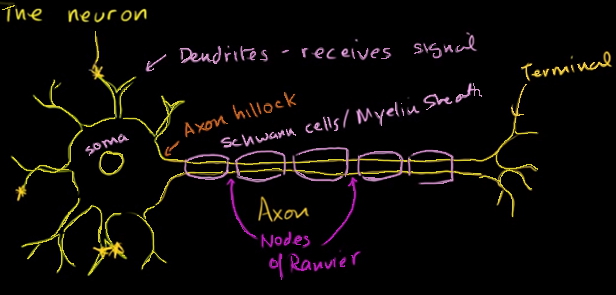
As you can see, a nerve cell is complex. The roundish Soma is a neuron’s body. The tail-like part of the neuron is its Axon and can be long, not a few measly inches long, but feet long. So, a nerve cell is not even remotely shaped like a blood cell.
An axon on a peripheral nerve cell has a protective row of Schwann Cells (the Myelin Sheath). The central nervous system also has myelin sheath, but it’s formed a little differently by oligodendrocytes. In either case the myelin sheath is like electrical insulation on an electrical wire. Yours began to form in about the 14th week you were in your mother’s womb. When it may begin to deteriorate, or demyelinate, depends on a variety of things, but high on the list is low vitamin B12 levels.
What is a healthy B12 level? ~ Read more.
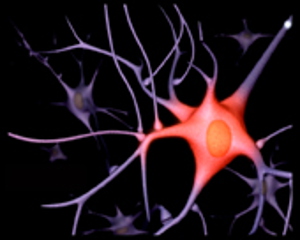
The messages sent by your nerves are in the form of ions moving along axons. Additionally, ions of sodium and potassium move in and out of neurons via proteins that extend through the cell membrane of fat molecules. Knowing the composition of your cell membrane, you can see why over enthusiasm in cutting fat from your diet can injure your nerves.
Because cells are negatively charged inside with a positive charge surrounding them, changing the balance of the electrical charge translates a sight, touch, taste, smell or sound into action: when you feel the hot stove you pull your hand away, thanks to the way your nerves use ions.
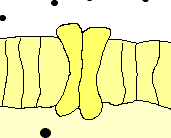
The points at which sodium and potassium are pushed either out of cells, or into cells, are called sodium/potassium pumps. In the peripheral nervous system they are located between the Schwann cells. All cells have sodium/potassium pumps, but they are most active in nerve cells. For a more in-depth discussion and explanation of ions’ movement through cells, check out C. George Boeree’s page, The Action Potential.
Here’s a thought: When you’re eating salty french fries, you’re putting two things basic to your body’s metabolism into your body ~~ two things that are at the very center of how your thinking and nerves work. Those things are the potassium in potatoes, and the salt.
There is a rather beautiful moment in Big History’s episode, The Superpower of Salt:
“Cells need salt to function. Our tears and sweat reflect the same salt content as in the ancient ocean.
Salt rules our minds. Sodium helps transmit signals between our brain cells. Our actual thoughts are made of salt.
The actual cerebral activity in your brain is just a bunch of sodium and potassium ions going in and out and in and out of cells. Our consciousness itself is made out of salt.”
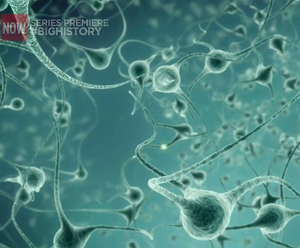
While I think potassium deserves more than a one word role in The Superpower of Salt, the episode is still a dynamite presentation. Watch the film ~ It’s enlightening to see how some very well known cities are tied to salt. You may be surprised!
Low Potassium Level or MS? ~ Read more.
Brain Noise Found to Nurture Synapses ~ Read more.
Impact of Low Potassium Levels
I had an experience that showed me how low potassium levels look and feel like extremely serious nerve damage. What happened was that a pipe broke, causing mains water to gush into my front room. While I waited for the plumber I swept water out the front door to keep the rest of my home from being flooded. When the plumber arrived he said he’d followed water for several blocks as it led to my house.
A few days later I was in a huge building with no place to sit down for a rather long distance, and the next day I had to fight Wells Fargo’s fraudulent foreclosure action in court. Within a few days of the extreme exhaustion and stress my difficulty walking and standing increased significantly. I ordered a cane, thinking that would help, and then before I even used the cane, I ordered a rolling walker.
I thought I would get better if I used more B12, but in fact I didn’t get better. Instead it became difficult to lift my feet. I had to give up putting on nylons. I thought that if I lost weight, it would be easier to walk and stand up. Since it was getting more and more painful to stand, walk or engage in almost any movement, it was easy to give up going to the kitchen for food.
I lost weight, but that didn’t make it any easier to lift my feet. And, I began to shake. Whereas I’d been able to go to the grocery store on and again, it was no longer possible for me to get into my friend’s pickup. I just didn’t have the strength.
I thought about going to a doctor, but I felt I might be told something frightening, like that I had MS. Since the consensus is that there’s no cure for MS, I decided there was no point in getting frightened more than I already was since that might actually make it even harder for me to recover. Low vitamin B12 can be misdiagnosed as MS ~ Read more.
For over a year my health deteriorated. I wondered how long I’d be able to take care of myself. When I tore a muscle and was having a lot more pain on top of the pain I was already had, I began doubling the amount of B12 I used till I was having about the equivalent of two B12 shots a day. That resulted in extremely painful muscle spasms. I was pretty sure that I’d overdone my cobalt intake ~ B12 contains the heavy metal cobalt. I was tweeting about this when someone replied that using B12 can cause muscle spasms because there isn’t enough potassium to keep up with blood cells/ need for potassium as they begin to divide properly after a period without enough vitamin B12.
I read scads of stuff on the internet, both research articles and forum contributions related to potassium. Together they convinced me to try more potassium. Especially given that I had had no idea we need 4700 mg of potassium a day. I mean, I wasn’t getting more than a small fraction of that.
But at the time my meals were being delivered by Kitchen Angels because I couldn’t stand long enough to cook. Kitchen Angels provided perfectly wonderful meals, but they included a banana only once ever week or so, and the same was true of potatoes. So, I ordered potassium capsules, failing to work out the maths, that if each capsule was 98 mg I’d need to consume practically the whole bottle in one day.
Since potassium capsules weren’t going to work, I researched foods rich in potassium. I ordered peanut butter to have for breakfast and lunch, and Maca to put in my coffee. Come spring I ordered seed potatoes and grew potatoes that were the most tasty I ever had. At the same time I was using cilantro capsules to reduce the heavy metals in my body.
Within a few weeks I began to be woken less frequently at night by excruciating muscle spasms that felt as if my torso was going to seize up in a fearfully frozen permanence.
Sleeping more was great, but even better was that my strength was returning. It had been almost impossible to stand without holding on to my walker, which made it hard to do things that required one of my hands. To my great joy, as time went on and I continued to consume more potassium rich foods, my strength returned.
Today, months later, I’m so much better than I can imagine being able to once more walk without a walker.
Nerve Damage
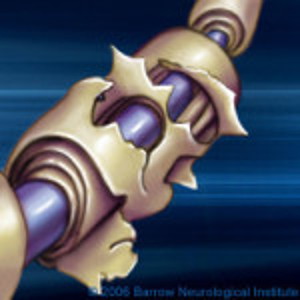
The picture above illustrates nerve damage in the form of tattered myelin sheath. This kind of nerve damage can cause or lead to intense pain. As long as your nerves are healthy the only pain you associate with them involves their rightful work, like telling you that you’ve hit your thumb with a hammer. Thus, it comes as a shock when your nerves transmit burning feelings as if you have the worst sunburn of your life.
If you don’t know that low vitamin B12 levels can lead to demyelination, that is, the loss of or damage to the protective sheaths on your nerves, you may have a future with years of pain burning away the joy you could otherwise have.
Additionally, when the myelin sheath is damaged it no longer keeps nerve impulses on the straight and narrow, so to speak. They slip out, losing some of their strength. It is not surprising, then, that the most common symptom of motor nerve damage, is weakness.
Other symptoms are painful cramps, muscle twitching visible under the skin, muscle loss, bone degeneration, and changes in the skin, hair, and nails. In fact, your fingernails are an easy way to check the health of your nerves. Read more.
Sensory nerve damage causes a more complex range of symptoms than motor nerve damage because your sensory nerves have a wider, more highly specialized range of functions. Your sensory nerve fibers register vibration, light touch, and position sense. Damage to your sensory fibers lessens your ability to feel vibrations and touch, resulting in a sense of numbness, especially in your hands and feet. You may feel as if you’re wearing gloves and stockings even when you’re not. You may lose the ability to identify small objects by touch.
Damage to sensory fibers may contribute to loss of your reflexes (as can motor nerve damage). Loss of your sense of position can make it hard to coordinate complex movements like walking, or to keep your balance when your eyes are shut.
Neuropathic pain which follows or accompanies nerve damage is difficult to control and can seriously affect your emotional well-being and overall quality of life. Neuropathic pain is often worse at night, seriously disrupting sleep and adding to the emotional burden of sensory nerve damage.
There are small sensory nerve fibers without myelin sheaths. They transmit pain and temperature sensations. Damage to these nerves can interfere with feeling pain or changes in temperature. For instance, you may fail to sense that you’ve been injured from a cut or that a wound is becoming infected. Or, you may not detect pains that warn of an impending heart attack.
Loss of pain sensation is particularly serious if you have diabetes. If you can’t feel pain you can fail to identify a problem that must be dealt with in order to avoid the need for amputation. Because of the loss of pain sensation there is a high rate of lower limb amputations among people with diabetes.
On the other hand, pain receptors in your skin can become oversensitive so that you may feel severe pain from things that are normally painless, like the weight of a sheet or clothing.
